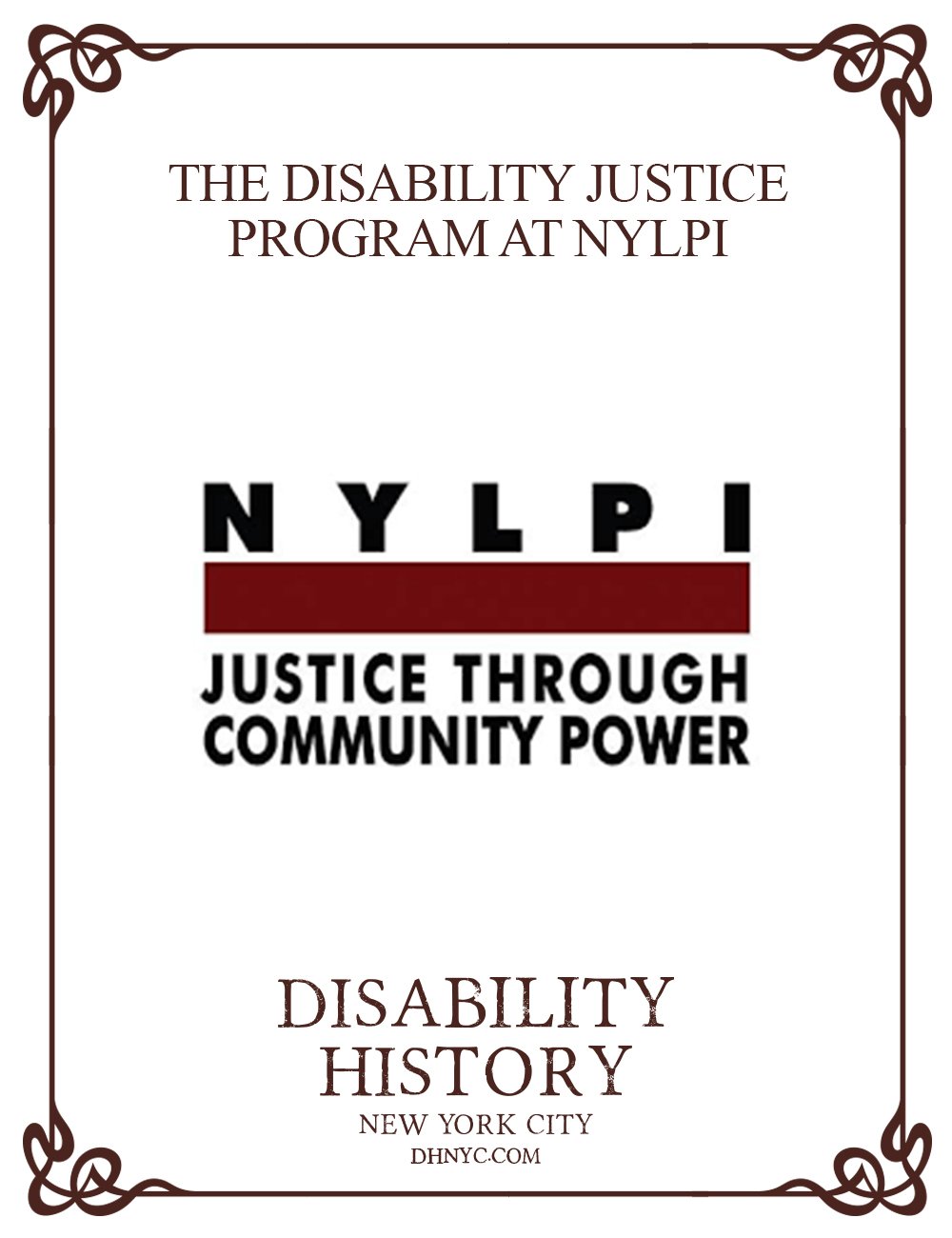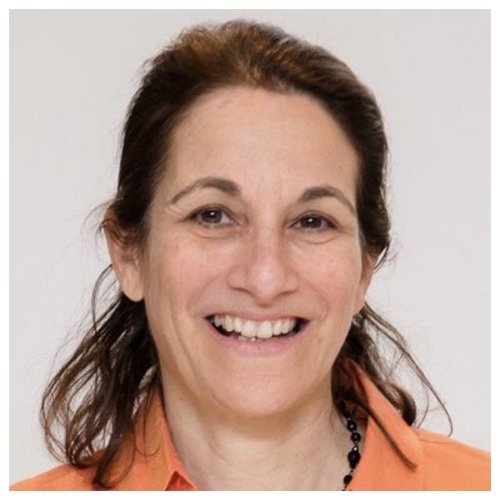The Disability Justice Program at NYLPI
In this image: The logo of New York Lawyers for the Public Interest, showing the phrase “Justice Through Community Power” beneath the firm’s abbreviation, “NYLPI.”
Organizing, lobbying, protesting, pushing for legislation, suing—the importance of these tools and techniques are widely understood within the New York City Disability Rights Movement. It’s less clear to me whether the role of professional allies is equally well recognized within the community, but public interest lawyers play a critical part in our movement’s successes.
The Disability Justice Program of New York Lawyers for the Public Interest, or NYPLI is the movement’s pioneering legal partner. Formed in the 1970s by a consortium of law firms, as a clearinghouse for high-impact litigation to be taken on for no compensation, on behalf of the public good (what lawyers call pro bono publicum, or pro bono), disability rights was NYLPI’s primary focus right from the beginning. Over the nearly fifty years that have passed since then, NYLPI has added environmental justice and health justice to its roster, and it has developed an elite cadre of professionals with exceptional expertise in their areas of practice.
In this image: A photograph of Ruth Lowenkron, a smiling white woman, age forties, with tied-back dark hair.
Ruth Lowenkron
For the past six years NYPLI’s Disability Justice Program has been led by Ruth Lowenkron. A seasoned attorney whose professional career began as a staffer in the law offices of Curtis Brewer, one of the founders of the New York City Disability Rights Movement, Lowenkron has dedicated her career to the cause of disability rights. As a litigator, administrator, tactician and educator, she has compiled an extraordinary record of effective advocacy on behalf of the disability community.
DHNYC recently had an opportunity to sit down with Lowenkron to discuss her career, NYLPI, and public interest law in general.
Here are some excerpts from that conversation.
How does NYLPI’s Disability Justice Program operate?
People come to us with specific problems and issues that need to be addressed. Those can turn into lawsuits or other advocacy efforts. And we develop campaigns for issues of public importance for various segments of the disability community. Those campaigns involve a lot of different strategies, including litigation. Our cases are usually in federal court, and we usually co-counsel with private law firms, which provide the staffing power, legwork and production capacities that we, with our staff of nine, just don’t have. Most of the time we take the lead because we have the subject matter expertise. Those relationships work very well. The private bar is eager to help us out.
What is impact litigation?
It refers to lawsuits that have a lot of leverage—cases that either bring public attention to an issue, or will have an important effect for the community.
Can you give me an example?
Here’s one of my favorites: in 1992, right when the Americans with Disabilities Act began taking effect, we wanted to mark the occasion with a real educational push. We came up with a suit about the observation deck of the Empire State Building. Its design wasn’t accessible—wheelchair users couldn’t get out to observe on the observation deck. Our “demand letter” to the Empire State Building’s owners went unanswered, so we filed a lawsuit and held a demonstration, which got tons of press. An artist created a poster about it. Saturday Night Live even did a parody news segment, with an illustration that showed ramps all around the building’s exterior. The suit succeeded. It led to widened doors, ramps for some steps and changes to the perimeter wall. So that suit had real impact both practically and culturally. Just as we had hoped.
What are some of your current efforts?
We are working on transforming the City’s response to mental health crises. The present response model isn’t working—the police are called in to those situations, and over the past seven years nineteen people have died as a result, sixteen of them people of color. On my second day as director of the Disability Justice Program, a middle aged African American woman was shot dead in her home after a call for assistance. We’ve been pushing non-police models of response, and we’ve been pursuing proof that the police are just not the right entity for these situations. For that reason, we led the fight for public access to body cam footage. We joined a coalition now known as Correct Crisis Intervention Today-NYC (or CCIT-NYC), and worked on City and State legislation. That effort led to the City’s new B-HEARD program (Behavioral Health Emergency Assistance Response Division), under which teams of paramedics and mental health professionals are the first responders. We are, however, critical of the B-HEARD program and continue to fight for a truly non-police response. We were also part of drafting the State’s legislation to implement the new 988 crisis hotline system.
We helped form the Access-A-Ride Reform Group, or AAARG! Among other things, we successfully sued the Transit Authority to improve access to Access-A-Ride for people with limited English proficiency. And we just filed a suit about fares—there are no discounts for frequent users, as there are in the subway and bus system.
Can you describe some past successes?
We’ve been able to get the 911 system accessible to the Deaf community. We successfully fought in court for a ramp in a co-op apartment building for a child with cerebral palsy who uses a wheelchair. We are counsel for the Willowbrook plaintiff class, and we act as monitors to ensure that former residents of the developmental center (infamously described as a “snake pit” by Robert Kennedy) are receiving the appropriate housing, benefits and care. The list is very long.
When NYPLI got started, it was the only public interest legal group doing disability work in New York City. Since then it has been joined by Disability Rights Advocates and Disability Rights New York, among others, which operate in a similar way. They cumulatively add considerable legal and strategic wattage to the City’s disability rights movement, and help push both public and private actors to move in the community’s favor. All without calling a lot of attention to themselves.
It’s for that reason that this profile is needed.
Note: a version of this entry appeared in Able News.
by Warren Shaw


